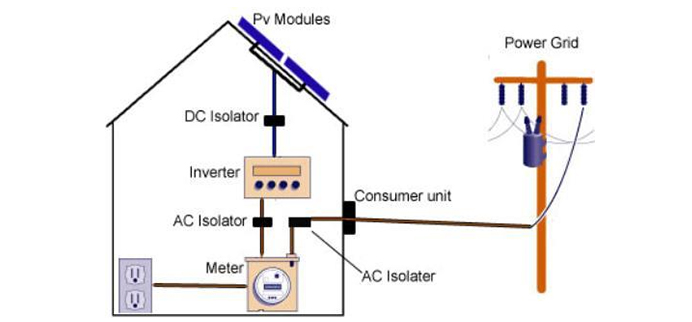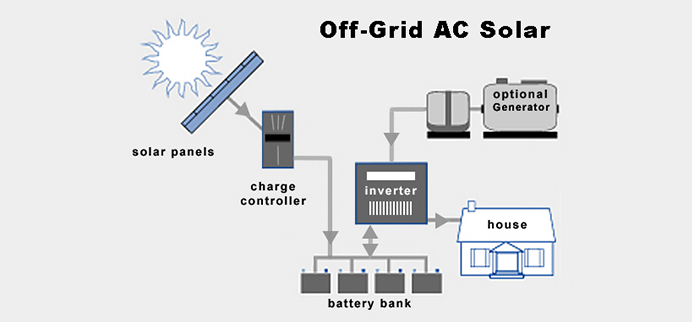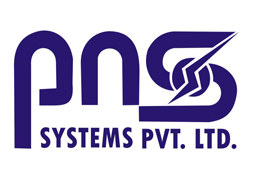Solar Power Solutions
Solar Power solutions can briefly be described as:-
- Solar power solutions are implementations and installations for the conversion of sunlight into electricity.
- Is a clean, environment friendly, inexhaustible source of energy and is the best replacement to other non-renewable energies.
- India’s geographical location very ideal for solar installations – optimal solar radiation in India is available for more than 300 out of 365 days per year.
PNS Systems. Pvt. Ltd. specializes in solar related installations, products and services with a result oriented approach. We focus on ensuring that the customer gets the highest possible return on investments, consistent long term performance from the system along with minimal operation and maintenance costs. Our portfolio of solutions in the solar energy space is as follows: -
- Roof Top Solar Installations
- Grid Tied PV Power Plant
- Off-grid Solar Installations
- Solar Water Pumping Solutions
Roof Top Solar Power Installations
- Roof top solar installations can be implemented on the terrace of any building (individual bungalows, residential apartments, commercial buildings and complexes, shopping malls, sports stadiums and complexes and many more).
- Generated power can be used to fulfil the electricity requirements of the building.
- Surplus electricity generated can either be fed back to the grid or stored locally in batteries for future usage.
- Two kinds of installations that can primarily be performed
- Grid Tied PV Power Plant.
- Off-grid Solar Installations.
Grid Tied PV Power Plant
In grid connected rooftop solar plant or small SPV system, the DC power generated from the SPV panel is converted to AC power using power conditioning unit and is fed to the grid either of 11 KV lines or of 415 / 240 Volt three / single phase lines. The system generates power during the daytime and the power generated is utilized fully for powering captive loads of the building such as lighting loads, fans, computers, kitchen appliances like wet grinder, refrigerator and many more.

The excess power generated during the daytime by the rooftop solar power plant is fed to the grid, as long as the grid is available.
If in case the solar power being generated is insufficient due to factors like excessively cloudy weather and rains, the captive loads are served by drawing power from the grid.
The grid-interactive rooftop system can work on the net metering basis.
This means that the utility pays to the power plant on the net meter reading basis only. Grid tied PV power plants can be installed on the roofs of various categories of buildings, including residential and commercial complexes, housing societies, community centres, government organizations, private institutions and many more.
Ideally, grid interactive systems do not require battery back-up as the grid acts as the backup for feeding excess solar power and vice-versa. However, to enhance the performance reliability of the overall systems, a minimum battery backup of one hour of load capacity is recommended.
In grid interactive systems, it has, however, to be ensured that in case the grid fails (due to power cuts or any other reason), the solar power being generated has to be fully utilized locally within the building and more importantly, the excess power generated has to be immediately stopped from getting fed into the grid. The reason is to to safeguard any grid person/technician from getting shocked (electrocuted) while working on the grid for maintenance or any other service activity being performed at the grid. This feature is termed as ‘Islanding Protection.
Financing options, financial benefits and return on investment on implementing a Grid tied PV Power Plant at your building:
Financing of residential projects.
Banks are willing to finance grid connected rooftop solar installation projects as a part of home loan/ home renovation loan and hence customers can take full advantage that home loan offers. This financing option is highly recommended for residences due to the following advantages and return on investment.
- Home loans/ home renovation loans from banks is the category of loan that banks offer at the LOWEST rate of interest. The current rate of interest is between 9.5% to 10.5% per annum.
- Deduction on principal repayment within the overall limit of Section 80C. The current limit for the financial year 2016-2017 is Rs 1,50,000/- and this could translate into tax savings of upto Rs 45,000/-
- Deduction on home loan interest payment under Section 24. The current limit for the financial year 2016-2017 is Rs 2,00,000/- for personal/self-occupied residential property and also, there is no upper cap on the interest payment in case of rented-out residential properties. This translates into a tax saving of Rs 60,000/- or more.
- The total investment made in the roof top grid tied solar PV plant can be recovered in a period of 7.5 years. This is taking into consideration the elimination of electricity bills and income from the electricity board for the excess electricity generated and fed back to the grid.
- Grid-tied Solar PV Plant has an optimal life of about 30 years and hence is a long term revenue generating asset and hence the home loan interest cost is a very nominal cost compared to the income and savings generated through the project.
Financial benefits on implementation by companies / commercial establishments.
Accelerated Depreciation (AD)
Accelerated depreciation of 80% is available under the Income Tax act for the Commercial and Industrial rooftop solar PV systems. This can provide significant savings to a SRTPV power plant generator who is a taxable assessed and has sufficient profits against which the depreciation can be charged.
- Section 32 Of Indian Income Tax Act Provides Accelerated Depreciation of 80% of the Invested Capital into Solar PV Projects to Professional Companies with Tax Liability. Investors Can Set Off Their Tax Liability on the Taxable Income to the tune Of 80% in the 1st Year and subsequently 20% in the 2nd Year.
- Section 80-IA (sub section 4) of the income tax Act, 1961 allows 100% tax waiver on the income generated for any single 10 year period during the first 15 years of operational life of a power generation project.
Off-grid Solar Installations
Off-grid solar power plant installations are independent and stand-alone solar based power generation units. In these systems, the DC power generated from the solar panels are stored in batteries and the customer can utilize this power for powering the captive load. Although off-grid installations can be done in any location, they are generally recommended in locations where it would be challenging to connect the system the grid. There are several variations of off-grid solar power, depending on the needs and budget of the customer. Based on the needs and including all other input parameters of the customer, the sizing and design of the system shall be performed by subject matter experts at PNS. On finalization of the sizing and design of the system by the customer, the same shall be implemented by PNS at the site of the customer.

Some of the major features and advantages of off-grid systems include:
- They are low maintenance systems which are highly optimized based on the requirements of the customer.
- High efficiency inverters are a part of the solar installation. They are capable of supplying power to the load directly during the day time and intelligently switch over to the power stored in the batteries during non-availability of solar radiation.
- Improved life and efficiency of the connected electronic components due to increased stability and reliability of power supply.
- True MPPT (maximum power point tracking) charge controller technology used and through this, a major part of the optimization and efficiency of power generated is taken care of at the solar module level itself.
- Tubular deep discharge batteries designed for longer life.
- Mounting frame structures can have additional tilt angles and this can provide about 6 % increase in power output.
- DC cables and junction boxes designed to minimize power loss.
- Galvanized steel structure design by professional structure consultant is utilized for longevity and robustness.
Solar Water Pump:
Solar water pumps are water pumping solutions that run on electrical power generated through solar energy. They are suitable for a wide variety of applications which include bore well pumping for irrigation purposes, drinking water, water for livestock, greenery based beautification projects and many more. In India, solar water pumps are seeing a fast paced growth in irrigation of agricultural fields in locations where grid energy is unavailable or inconsistent and alternative sources like wind energy do not provide sufficient energy. Solar water pumps have little environmental impact and are extremely economical due to low operation and maintenance costs.

A solar water pumping system has the following three basic components.
- Solar Panels – the solar panels are connected in parallel or series based on the desired output levels required and this configuration generates DC current by converting solar radiation into electrical energy.
- Variable Frequency Drive (VFD) – is used for converting the DC power generated by the solar panels into regulated AC power to be able to drive the water pump.
- Solar water pumps – are the water pumps that are integrated with the rest of the system for the pumping of water from the required source to the final destination where the water is required.

